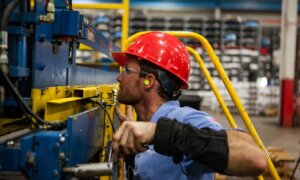The world is currently facing a climate crisis, with global temperatures rising and the effects of human activity on the environment becoming more apparent. To combat this, we need to focus on reducing our emissions as well as investing in renewable energy sources.
One way to do this is through carbon capture technology – a process that involves capturing carbon dioxide (CO2) from various sources such as power plants, factories and other industrial processes before it can be released into the atmosphere.
Carbon capture has the potential to reduce greenhouse gas emissions significantly, thus helping us create a greener future for ourselves and generations to come.
What Is Carbon Capture
Carbon capture is a process used to reduce the carbon dioxide (CO2) emissions from power plants, industrial processes and other sources. It works by capturing the CO2 before it is released into the atmosphere.
The captured CO2 can then be stored permanently or used for beneficial purposes such as enhanced oil recovery, food production or methanol production.
Carbon capture is an important part of the larger picture of reducing global emissions, as it can help to reduce the amount of CO2 that goes into the atmosphere.
Carbon capture can be achieved in a number of ways, such as post-combustion capture, pre-combustion capture and oxyfuel combustion.
Post-combustion capture involves separating the CO2 from other gasses after combustion, while pre-combustion capture uses a chemical reaction that converts the fuel into a gaseous form with lower emissions.
Oxyfuel combustion is a process that burns fuel in an oxygen-rich environment to reduce the amount of nitrogen oxides (NOx) produced.
Carbon capture can also be used to create carbon credits. These are tradable financial instruments that allow companies and individuals to offset their emissions by buying credits from other sources.
Carbon credits can be bought or sold on the open market, providing an incentive for those who reduce their emissions and a penalty for those who produce excessive amounts of CO2.
Carbon capture is a promising technology that has the potential to reduce global emissions and help us reach our climate goals.
It can be used in combination with other renewable energy sources such as wind and solar power, making it an important part of our transition to a cleaner, more sustainable future.
Benefits Of Carbon Capture
Carbon capture and storage (CCS) technologies can provide numerous benefits, including reducing greenhouse gas emissions while allowing the continued use of fossil fuels.
CCS can also be used to enhance energy security by providing a reliable source of energy.
It can help stimulate new economic growth and job creation in areas where carbon-capture infrastructure is developed.
CCS can also produce a variety of by-products, such as hydrogen fuel and carbon dioxide for use in other industrial processes.
Utilizing CCS technologies may reduce the need to explore new sources of fossil fuels, thereby helping to protect ecosystems from potential environmental damage associated with drilling operations.
CCS provides an important tool in the fight against climate change. By capturing and storing carbon dioxide, CCS can help reduce global emissions while allowing us to continue using the energy sources that have given us so much convenience and mobility.
As technology improves and the cost of carbon capture decreases, CCS will become increasingly viable as a long-term solution for reducing greenhouse gas emissions.
In the meantime, a variety of strategies such as renewable energy and energy efficiency measures must be implemented to help reduce global emissions.
With the right combination of technological advances and policy initiatives, carbon capture can play an important role in helping us achieve our collective climate goals.
Implementation Challenges
One of the biggest challenges to implementing carbon capture is cost.
Carbon capture and storage (CCS) technologies require a significant amount of energy and capital investment, making them expensive to install and operate.
CCS systems are not yet widely available, so finding suitable locations for implementation can be difficult.
Current CCS technologies have limited capacities, meaning they cannot capture all of the carbon dioxide emitted by a power plant or industrial facility.
Another major challenge is the lack of infrastructure necessary for CCS technologies to be effective.
Pipelines and other infrastructure must be in place to transport captured carbon dioxide from the source to a storage site, which can be time-consuming and expensive to build.
Finally, carbon capture technologies can have an adverse environmental impact on the surrounding environment.
For example, CCS systems can emit large amounts of water vapor, which can cause acid rain and air pollution in nearby communities.
Stored carbon dioxide has the potential to leak from storage sites if not carefully monitored and maintained over time.
All these risks must be carefully considered before implementing any CCS system.
Solutions For Increasing The Efficiency
Increasing the efficiency of carbon capture and storage (CCS) technology is an important part of reducing emissions and fighting climate change.
There are a number of potential solutions for improving the efficiency of CCS technologies, including:
- Increasing investment in research and development to improve existing CCS technologies as well as developing new ones.
- Utilizing carbon capture equipment onsite at power plants or other emission sources before emissions are released into the atmosphere.
- Enhancing the existing network of pipelines, storage sites, and processing facilities to create a more efficient CCS infrastructure.
- Encouraging public-private partnerships for developing and funding CCS technologies.
- Developing innovative financing and economic mechanisms to ensure CCS technologies are cost effective.
- Utilizing carbon capture and storage as part of the overall energy mix, rather than a stand-alone solution.
- Increasing collaboration between industry, governments, and research institutions to develop better CCS solutions.
These solutions will help improve the efficiency of CCS technology, reduce emissions, and fight climate change. However, it is important to remember that no single solution will be effective in reducing emissions on its own.
A holistic approach which combines multiple strategies is necessary to ensure meaningful progress in tackling climate change.
Final Word
It is clear that carbon capture technologies are an essential part of any plan to reduce emissions and create a greener future.
Not only do these technologies help us mitigate the impacts of climate change, but they also provide an economic opportunity for countries around the world who can take advantage of this technology.
Despite its challenges, it is possible to make progress in deploying effective carbon capture solutions if governments commit to investing in research and development and incentivizing private sector investment.
By working together with policy makers, industry leaders, scientists, and citizens alike we have the power to ensure a brighter tomorrow through carbon capture solutions.
Article contributed by Charlie Waters
Charlie has been in the online content world for over 25 years as a freelance writer, translator and transcriptionist, covering different topics – finance, energy and also sustainability – a great and long-awaited field. What is he doing when not writing? Charlie learned how to enjoy long walks, play chess, and finally – how to sleep at night!
Photo by Patrick Hendry onUnsplash
Also read: U.S. Carbon Capture Plant That Shut Down – The Consequences Were Worse Than The Solutions
Follow TechTheLead on Google News to get the news first.





















